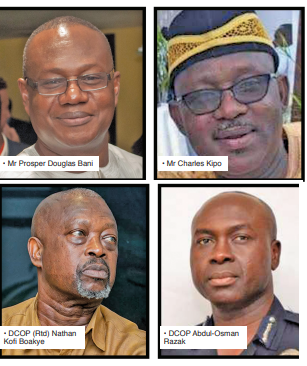An earthquake shook the densely populated New York City metropolitan area on Friday morning, the US Geological Survey said, with residents reporting they felt rumbling across the eastern seaboard in what is a relatively rare event for the region.
The government agency reported a quake with a preliminary magnitude of 4.8, with a preliminary location for the epicenter given as near Lebanon, New Jersey, and later as near Tewksbury and Whitehouse Station, all three of which are in Hunterdon county roughly in a 10-mile radius.
People reported feeling the quake in the states of Connecticut and Massachusetts, with the Weather Channel reporting that it was noticeable in Boston and residents in Philadelphia reporting they felt it, too. Tremors lasting for several seconds were felt more than 200 miles away near the New Hampshire border.
The fire department of New York said on Friday there were no initial reports of damage or injury. But city dwellers were shocked and a little shaken up by the unexpected event, during which people sitting at desks or at home in high rises felt their whole building shake mildly for several seconds.
Camille Lewis was at a cafe in New York City when she felt the shaking.
“I haven’t been in an earthquake in New York and honestly I was scared that something was happening. I’m glad that the building I was in held up and honestly, I’m just glad that everybody is safe,” she said.
Lewis went on: “I was like, ‘Do I need to get under a table?’ Everybody was looking around, wondering what was going on. It lasted for a while. Definitely weird.”
The movement then passed but people were left jittery about aftershocks and busily checking in with friends and family, including children at school, briefly putting a high load onto cellphone networks, the city authorities reported.
The New York police department’s deputy commissioner of operations, Kaz Daughtry, said in a statement: “While we do not have any reports of major impacts at this time, we’re still assessing the impact.”
The UN security council was meeting at its headquarters in New York to discuss the situation in Gaza when the earthquake hit, shaking the building.
“New Yorkers should go about their normal day,” said the mayor, Eric Adams, but the governor, Kathy Hochul, said in a press conference that the quake was felt as far away as Baltimore, Maryland. “This is one of the largest earthquakes on the east coast to occur in the last century,” she said.
“Everyone should continue to take this seriously” in case of aftershocks, she added.
Planes were grounded at New York’s JFK and New Jersey’s Newark international airports and arriving flights were delayed. East coast train services were slowed but not canceled and New York City public transit continued running.
Hochul’s office reminded residents that “while highly unusual” the earthquake was not an isolated event as New York sites on geological fault lines. The tremor was felt to varying degrees across New England and south in Pennsylvania and Maryland, including in Baltimore, where Joe Biden was expected on Friday afternoon to tour the damage of the major bridge that collapsed there, blocking the port, 10 days ago.
Among those taking Friday’s earthquake in their stride was Roisin Brady, 36, an English teacher at a Manhattan private school. She said her students are going to write poetry about the earthquake.
Brady and her students had already planned to use the upcoming solar eclipse as material for their poetry unit. But the latest earthquake is another rare phenomenon for her middle school pupils to write about.
Brady was in her bedroom of her fourth-floor Brooklyn apartment when the earthquake happened, working remotely on student reports. Her boyfriend was in the kitchen, shouting to Brady about the glassware that was vibrating.
She noticed the clothes in the couple’s wardrobe were shaking. She then realized that the buildings across the street were shaking, too.
“It was just so surreal,” said Brady, of Glasgow, Scotland. “To see my boyfriend’s clothes all hanging out, and then swinging was just such a surreal experience,” she added.
The shaking stirred memories of the 23 August 2011, earthquake that jolted tens of millions of people from Georgia to Canada. Registering magnitude 5.8, it was the strongest quake to hit the east coast since the second world war. The epicenter was in Virginia.
That earthquake left cracks in the Washington Monument, spurred the evacuation of the White House and Capitol and rattled New Yorkers three weeks before the 10th anniversary of the September 11 terror attacks.
Meanwhile on Friday, the official social media account of the Empire State Building reassured its fans:
I AM FINE
— Empire State Building (@EmpireStateBldg) April 5, 2024
“}}” config=”{“renderingTarget”:”Web”,”darkModeAvailable”:false}”>
I AM FINE
— Empire State Building (@EmpireStateBldg) April 5, 2024
James Pittinger, the mayor of Lebanon, New Jersey, near the quake’s epicenter, said there were no reports of injuries or significant damage but that people were unnerved. “I was sitting in my home office when things started to fall off the walls and shelves,” Pittinger said. “It was a crazy experience.”
Earthquakes in the eastern US are felt across a far broader area because the bedrock is much older and harder, transferring seismic energy more easily, according to the USGS. The rocks in the western US are younger and contain more faults that absorb earthquake energy.
Reuters contributed reporting




















Discussion about this post